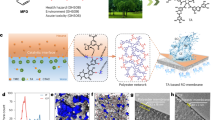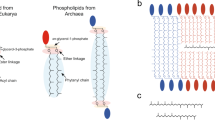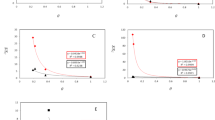Abstract
FORSTER1 has recently examined the peritrophic membrane in Caridea (Crustacea, Decapoda). He found a membrane in the mid-gut of all the Caridea examined and was able to show that it was chitinous. A similar membrane can easily be shown, to surround the fæcal pellets of calanoid copepods, where it often forms a ‘tail’, occasionally of considerable length, at each end of the pellet. That the pellet is indeed enclosed in a membrane can easily be demonstrated by compressing it carefully under a coverslip on a microscope slide. As pressure is applied the pellet first flattens more or less evenly throughout its length ; then the membrane suddenly ruptures at one point only and its contents can be seen streaming through the point of rupture. The membranes can also be demonstrated by careful heating of a pellet in a concentrated potassium hydroxide solution: the alkali dissolves most of the fæcal matter, leaving the membrane intact. No positive results were obtained in tests for chitin but this may well be because of the small size of the pellets (c. 1.5 × 0.15 mm.) and the delicacy of the membrane.
This is a preview of subscription content, access via your institution
Access options
Subscribe to this journal
Receive 51 print issues and online access
$199.00 per year
only $3.90 per issue
Buy this article
- Purchase on SpringerLink
- Instant access to full article PDF
Prices may be subject to local taxes which are calculated during checkout
Similar content being viewed by others
References
Forster, G. R., J. Mar. Biol. Assoc., 33, 315 (1953).
Dakin, W. J., Int. Rev. Hydrobiol., 1, 772 (1908).
Lowe, E., Trans. Roy. Soc. Edin., 58, 561 (1935).
Darwin, C., Monograph on the Sub-Class Cirripedia, 1, 45 (1851), and 2, 36 1854.
Chatton, E., Bull. Soc. Zool. franc., 45, 265 (1920).
Wigglesworth, V. B., “Principles of Insect Physiology”, 313 (1951).
Author information
Authors and Affiliations
Rights and permissions
About this article
Cite this article
GAULD, D. A Peritrophic Membrane in Calanoid Copepods. Nature 179, 325–326 (1957). https://doi.org/10.1038/179325a0
Issue date:
DOI: https://doi.org/10.1038/179325a0
This article is cited by
-
Krill and salp faecal pellets contribute equally to the carbon flux at the Antarctic Peninsula
Nature Communications (2021)
-
Increased production of faecal pellets by the benthic harpacticoid Paramphiascella fulvofasciata: importance of the food source
Marine Biology (2009)
-
Assessing feeding of a carnivorous copepod using species-specific PCR
Marine Biology (2005)
-
Zooplankton grazing on the coccolithophore Emiliania huxleyi and its role in inorganic carbon flux
Marine Biology (1994)
-
What happens to zooplankton faecal pellets? Implications for material flux
Marine Biology (1990)



